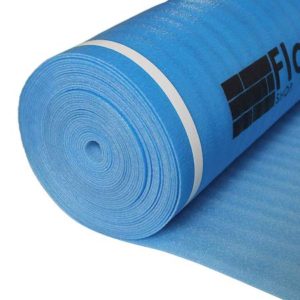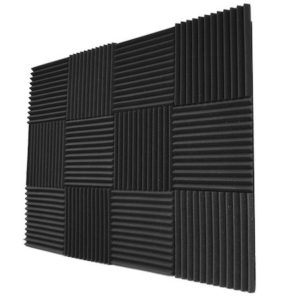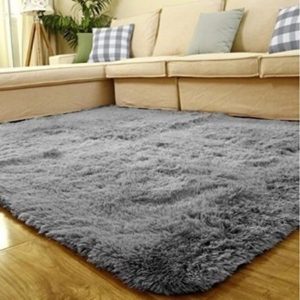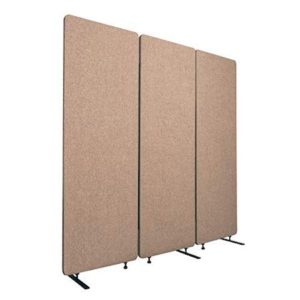Soundproof your cubicle: 9 ultra simple steps
Imagine you are laser-focused and working your business plan. Or the next course you are launching this week.
Or the book you are writing that turns out to be an Amazon Best Seller.

As you read this, you are hearing the constant chatter in the background.
Someone speaking over the phone regarding their weekend plan, your colleague coughing loudly, the ringing phones at the back, someone sneezing and sniffing by your side or the vibration of your manager passing by which is NOT SO GOOD!
Even if you are one of those 4.7 million people who work remotely, chances are you are hearing the nearby car passing, your toddler who is crying in the other room or the chirping birds in your garden.
And it doesn’t stop there. You might find someone snoring if you work late night.
I think you get the point by now.
We often get used to such a work environment but when it’s time to work on the most important project that needs to be delivered in 24 hours, or better yet you need to finalize the board meeting agenda that you are having this afternoon, you are in trouble.
I mean you really are!! Because getting this done on such a short notice is scary as hell.
If this never happened to you, congratulations!!
But if it did, don’t worry, because today we are going to explore something incredible so that can save everyday troubles.
Regardless, right now you are not having the perfect work environment, and you need a quick fix to it.
I know this sounds too cliche, but how about I take you through a step-by-step guide and discover how to soundproof your cubicle that can be a life saver in such a situation.
Let’s get started!
I am an Affiliate for Amazon and others, which means I may make a commission if you purchase something through the links here. There is NO extra cost to you at all, and THANK YOU so much for the support. Learn more here.
Related: How to make your own DIY Sound Panels

Contents: Skip to section
Why and how can you benefit from soundproofing your cubicle
Let’s face it, working from home or office requires a lot of discipline – a disciplined routine, a quiet work environment or a focused attitude.
Working from home can be great because that’s when you are your own boss and you determine how long you actually want to work. Plus, you can finally buy yourself a pretty office chair!
But if you are having a home office that is a bustle of activities, then soundproofing can save you.
The result? A very quiet environment to get your work done. At the end, all that matters is a productive day isn’t it?
I quit my high paying corporate job 5 years ago, and the biggest challenge I face was a noisy environment.
But it’s not about a home office only, because working in an actual office can be a lot more challenging.
The chatter, the background noise and the vibrations of the people passing by can be distracting. Eventually, I tried out some tricks to soundproof my cubicle and it worked.
The best part about soundproofing is, this is not going to be your casual expensive project, it’s cost-effective, and you can do it using your creative art.
Soundproofing is the cheapest and easiest way to protect yourself from unwanted background noise.
It might take some time but it’s worth it. One thing is for sure, if you complete all these steps nicely, then they are sure to give you a soundproof environment.
Related: How to soundproof an apartment door
What do they do and do they really work?
When it comes to soundproofing your office cubicle or home office, you should definitely know the difference between sound deadening and sound blocking.
For most people soundproofing is all about putting the wall foams against the wall, which isn’t accurate.
If you choose the right quality products and use the right approach, soundproofing does really work.
For the best results, you can ask help from a professional supplier who has a long record of success and resolved the same issue for countless times.
If you notice sound bleed through the floors, ceilings, and walls, you can save up to 90% of the energy by choosing the right material that can collapse the sound waves.
Yes, there is not a single perfect formula, but you can take steps to better control the noise.
Soundproofing is done either to block noise from entering into the cubicle or blocking the noise from leaving the cubicle.
The material that you use either reduces the sound or absorbs it. Scientifically, the noise can not be blocked completely, but it ensures substantial reduction.
For effective results, you can use materials like foam because when sound travels into the soft surfaces, either it is absorbed or gets reduced.
So far you must have enough idea about how it helps you improve your work environment, now let’s find out how to actually soundproof your cubicle.

Steps and material to soundproof cubicles
Here is a list of the tools that you need to soundproof your cubicle. They are incredibly useful and can be reused for most home improvement projects. Or maybe you can check out some of the latest articles here to get more project ideas!
And you need the following material to have a nice soundproof cubicle for yourself:
Once you get the items you need, follow these tips to redesign your cubicle or home office.
Of course, it is far easier said than done, but let’s find out where to start!
Pro-tip: Before you could decide which way to implement please check with your boss or manager to ensure that are as per office policies.
Related: Block out noise without earplugs
Step 1: Choose the right furniture
If you are responsible for furnishing, you can choose soft furniture items, because angular and hard furniture items often make more noise.
You can also add some indoor plants or drapes that can reduce the noise somehow.
Step 2: Seal the gaps well
Whether it’s your office or home office, the first step is to seal all gaps.
Use a high-quality acoustic caulk to seal up any spaces, holes, and gaps.
Sealing the gaps is the foundational setup to soundproof your cubicle, please take your time and do it well, otherwise your efforts will be in vain.
Alternatively, you can also use weatherstripping tapes to seal up these gaps.
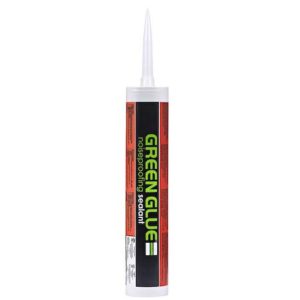
Check price here
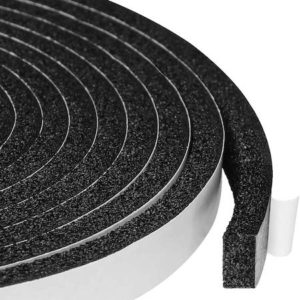
Check price here
Step 3: Soundproof the floor
Okay, so you have sealed all the gaps.
Now it’s time to soundproof the floor.
Use high-density material that will improve the density of the floor.
If you use acoustic insulation, it will give you better results.
Step 4: Soundproof the wall
Once the floor of your office is padded, use a damping compound or panels to soundproof the walls.
You can use acoustic panels that can easily be attached to the walls.
They are soft in nature therefore the noise doesn’t bounce off them, and they will guarantee you have a great time in your quiet and peaceful comfy cubicle.
Step 5: Add some carpet
The denser and thicker the fabric of the carpet, the better.
It adds personality to your cubicle space.
Instead of laying a carpet, you can instead invest in a nice rug, but there is a downside as they cover less space.
Step 6: Soften the floor with mats
Soundproofing your floor is easier than you think.
You can place dense and thick rubber floor mat in combination with the carpets, and it will increase the mass of the floor, and thus the floor will absorb vibrations and deaden the sound energy much better.
It will make a huge difference if you have bare timber floors.
If you use it under the carpet throughout the office, it will significantly quiet down your office space.
Step 7: Increase the height of each wall
Yes, this one can help you reduce the noise substantially, but it’s not hard to do.
If you use wall extenders it will help you avoid the noise from four sides, plus they are easy to install and budget-friendly.
It can also become a privacy screen for you.
Related: Cheapest way to soundproof a basement ceiling
Step 8: Get a sound conditioner
Believe it or not, a white noise machine helps you absorb noise.
Often people buy them to fall asleep but they are frequently used in office cubicles.
The neutral audio sound of the white noise machine blurs out background voices and creates a quiet environment.
The good thing about these is, they come readily and at a reasonable price.
Related: Best Office White Noise Machines
Frequently Asked Questions (FAQ)
What can I use to cover my cubicle walls?
You can use acoustic panels and absorption products. To cover your cubicle walls, it will help you quieten the work environment because it absorbs sound energy and avoids your sound leaving your office desk.
How do you reduce noise between offices?
You can reduce noise between offices by adding partitions and then adding all the soundproof trips that I have mentioned above.
How can I soundproof a room without damaging walls?
Acoustic panels do not damage and they are easy to install. Results, fewer distractions, and clearer communication. If you want you can make a creative or artistic statement for your cubicle.
Soundproof office cubicles: Conclusion
Okay cool, so that’s the brief guide to how you can soundproof your office cubicle or home office.
I am pretty sure you are committed to get the best work environment.
Still wondering where to get started? Just let me know!
Additional reading:


